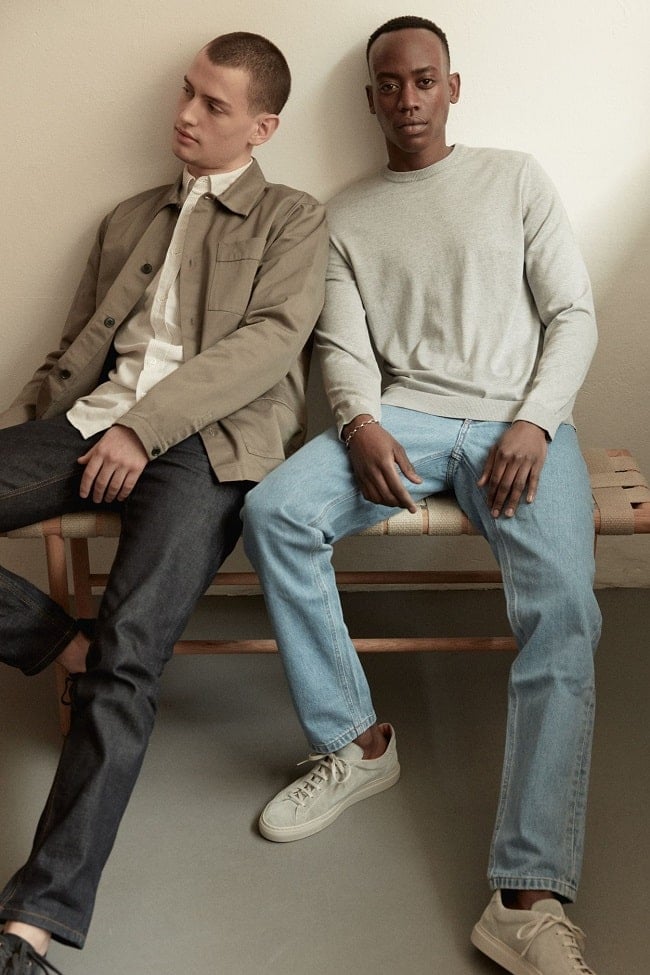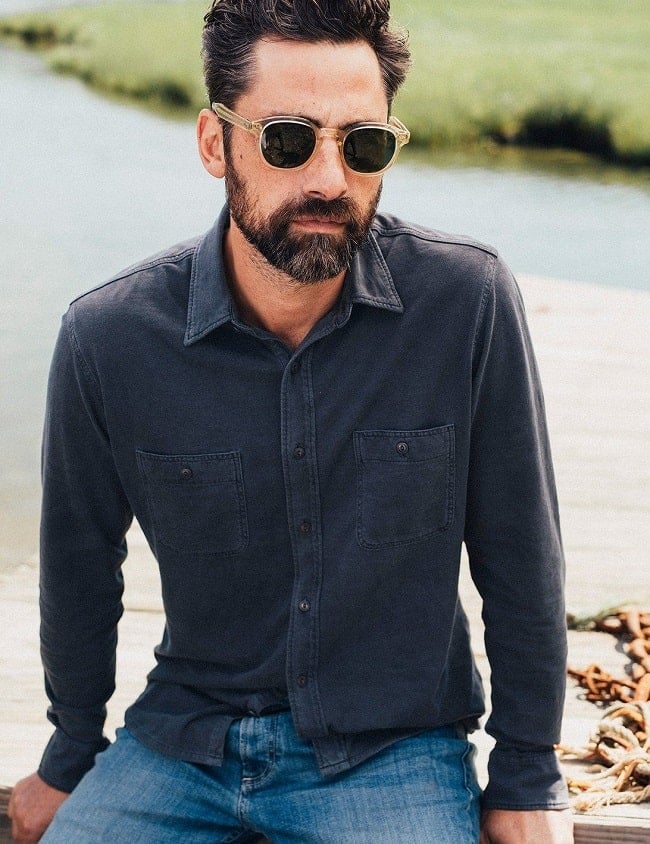1
HOME > Tips & Advice >
THE DIFFERENCES BETWEEN ETHICAL AND SUSTAINABLE FASHION
Written by Ivan Yaskey in Tips & Advice on the 21st April 2021

We know our choices have an impact on the world – particularly the environment and the progression of climate change. Greater awareness of manufacturing practices over the past 30 years has come to a head in more recent times as demand increases for ethical, sustainable fashion. Yet, these two concepts aren’t interchangeable, although certain aspects overlap. Unlike, say, with qualifying organic foods, “ethical” and “sustainable” have no industry-wide definition, and practices like greenwashing and lack of transparency along the supply chain end up deceiving consumers looking to make a more conscientious choice. Ethical fashion started seeing its momentum grow in the 1990s after Nike’s manufacturing practices in Asia were exposed. Today, such awareness is fueling market demand to the projected tune of $8.25 billion on a global scale by 2023. Consumers not only seek items that are manufactured with eco-friendly practices but also have little to no impact on the environment, don’t result in the mistreatment of animals, and aren’t created through worker exploitation in terms of wages and safety. Unfortunately, both in terms of sustainability and ethical practices, not all of these aspects are easy to discern, even with research, due to multi-element supply chains that span the globe. As your own awareness grows and you look into where materials are sourced from and how that shirt or pair of shoes is made, it’s important to understand what sustainable and ethical fashion are, where they diverge, and how they overlap in today’s confusing, almost intentionally complex economy.
What is Sustainable Fashion?
Sustainable fashion, in more simpler terms, refers to the impact producing clothing and accessories has on the environment and encompasses all related aspects of the supply chain: where and how the materials are grown, the dyes used, and reducing energy through sourcing, production, and transport. Within this scope falls vintage and upcycled fashion, both designed to repurpose clothing to reduce the fashion industry’s effect on the world at large. As you’ve likely read, the fashion industry generates the second-largest amount of pollution on a global scale, falling behind oil and gas. Based on research from McKinsey & Company, this distinction doesn’t just come from the dyes ending up in rivers or the amount of pesticides required to grow traditional cotton. Rather, it’s based partially on the greenhouse gas emissions generated through sourcing materials and producing garments and accessories. As such, relying strictly on labels like “organic” and “green” ends up a semi-fruitless endeavour if you’re unsure about how the raw materials are being transformed into a garment.

Along with this tenant, sustainable fashion looks beyond strict production and sourcing to the lifespan of a garment. Fast fashion has generated an industry in which shirts, jeans, and shoes only last a couple of wears before they’re tossed. It’s estimated that such habits, unless addressed on a global scale, will result in 134 million tons of textile waste being deposited in landfills each year – both from consumers viewing garments in an increasingly disposable fashion and the excess from textile production that doesn’t make it to stores and isn’t picked up as deadstock. Within this spectrum, sustainable fashion strives to not only limit the amount of natural resources going toward textile and garment production but to also repurpose those out there, often striving for what’s now being dubbed “circular” production. Among some brands – REI and Patagonia come to mind – this entails taking back broken or older products and reusing their components, rather than generate something completely new from the raw materials on up. Here, the goal is to create as minimal of a footprint as possible while utilising existing resources to reduce energy usage, greenhouse gas emissions, and the creation of new materials when existing sources are perfectly serviceable. On this last note, sustainability overlaps with minimalist fashion with the objective of extending a garment’s lifespan as far as it will go. The creation of new materials, as already mentioned, ends up having one of the most pervasive effects on the environment. Before used or unsold clothing ends up in landfills, transforming cotton into fabric consumes a large amount of water, creating and dyeing textiles releases pesticides and other chemicals into the ocean and drinkable water sources, and, from production to washing the garments, microplastics further wind up in those water sources. That doesn’t take into account the land and food needed for animals that will become leather products, or the impact tanneries can have on a local ecosystem.

Particularly where sourcing is concerned, brands have sought out materials and production processes that will have less of an environmental impact. This entails organic cotton, which requires fewer chemicals to produce; bamboo and hemp, which grow at a faster rate and don’t require the same amount of water; or Tencel or modal, made from cellulose fibers. At the same time, even outside of the outdoor world, higher-end fashion brands have started seeking out used and deadstock materials for their collections. Yet, these practices, while making a small impact, give way to greenwashing. What does this look like? It’s a brand utilising Tencel or organic cotton but not being descriptive of its full supply chain, claiming that viscose rayon is sustainable due to its wood-based composition without addressing the chemicals used to generate the fabric, or strictly focusing on the materials, rather than how those fabrics and components get engineered into a garment. Furthermore, sustainable fashion has a significant blind spot building off this last point: Workers’ conditions and wages aren’t addressed or taken into account, from how the garments are created to material sourcing.

What is Ethical Fashion?
This is where ethical fashion diverges from its sustainability-focused counterpart. “Ethical,” in terms of establishing a definition, encompasses sustainable fashion regarding its impact on the environment and then extends to the labour involved in creating the garments – who was working, how safe are the factory’s conditions, and how well are workers paid. Considering this split, you can have sustainable fashion that, through the production process, isn’t fully ethically made. Seeing an organic cotton or bamboo T-shirt at a fast-fashion retailer is one such example. An ethical foundation throughout the supply chain looks like:
- Worker protections in terms of sourcing materials and manufacturing garments, rather than slave labour, long hours to meet fast production deadlines, or a hazardous, sweatshop-like environment where employees have a high risk for harassment and abuse.
- Safe working conditions, from the environment in which the material is sourced or the garment is manufactured to chemical exposures on the job.
- Fair pay in relation to the hours worked. Oftentimes, pay equity runs parallel to a country’s labours laws.
- Having willing adults source materials and manufacture garments, rather than a factory’s use of child or prison labour.
Although it’s assumed that workers paid to make garments in the US or UK have a higher likelihood of receiving fair wages while doing their jobs in a safe environment, this isn’t always the case, as reports on Boohoo and Fashion Nova have illustrated. As such, rather buy American or local, it’s a good idea to one, look for clothing that’s Fair Trade Certified and, secondly, understand how these garments are being made. On this last note, ethical fashion’s other half takes into account the treatment of animals, factoring in cruelty in the process of sourcing leather and wool.

Where Ethical and Sustainable Fashion Overlap
A brand can’t be truly ethical unless it’s sustainable. As well, calling something sustainably made without factoring in the labour going into it reads as hollow as greenwashing. In considering the intersectionality of these areas:
1. One of the most pressing aspects of ethical and sustainable fashion is how materials get sourced, particularly after reports indicate Chinese suppliers make use of slave labour for harvesting organic cotton.
2. Using pesticides to grow a cotton crop has reaching environmental and health effects. These substances often end up in the drinking water supply and cast a wide footprint affecting those far beyond the immediate community.
3. Consumers have started demanding more than the occasional organic cotton or sustainable collection, and are seeking to know about the entire supply chain, as manufacturing and sourcing are often where both ethical and sustainability issues emerge.
4. Slow and seasonless fashion have started gaining traction among brands to reduce their output, not adjust offerings directly in relation to North American and European seasons, and conserve materials in the process.
5. The conversations around vegan fashion – particularly the multitude of vegan leather options out there – are seeking solutions that not only lessen animal cruelty but also offer a material, unlike PVC and PU, that can break down while providing longer wear.


Trending
2
3
4
5
6
7
8
9
10










